Eastern Germany

After enduring a few weeks of chilly temperatures and threatening rain, today’s weather is lovely. So why am I sitting here writing while Mike is out cycling an hour away? A couple of reasons, really. We rode 50 km on our ebikes just two days ago, followed by another 40 km yesterday (and I forgot my padded bike pants—ouch!). With just two days left before we leave, we need to squeeze in one more ride. I declared today my rest day while agreeing to cycling again tomorrow. However, when my mother asked about recent articles, I realized I was falling behind. As Mike pedals, I am sorting, cropping, and labeling photos, and composing this piece. Fortunately, these moments of separation are rare, unlike the period when my broken ankle disrupted everything. Together, Mike and I recently pedaled from Prague nearly to Berlin, and today, he should complete the journey into the German capital. Our future plans involve extending our route from Berlin up to the Baltic Sea.
We’ve now spent almost three weeks in Eastern Germany—an unusually lengthy stretch for a single post. My apologies for the length—I’ll try to keep it interesting by adding some photos.
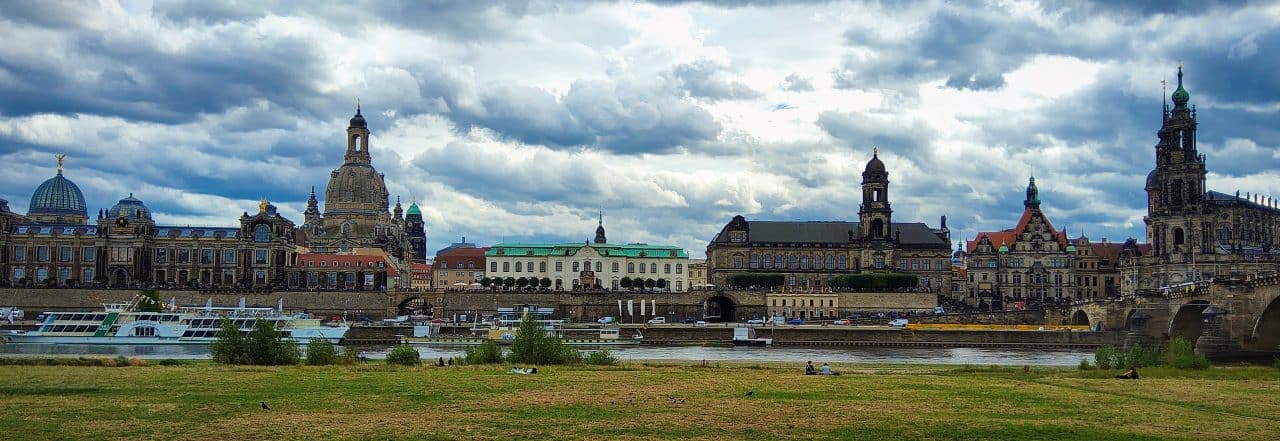
We started in Dresden under an awful weather pattern that was covering all of central and northern Europe including the UK. My cousins in England weren’t happy. Their house was 14°C (58°F) in August before their central heating kicked in!
Helge and Elin, friends of ours from Norway, had arranged to come and visit us with their camper, wherever we where in Europe. This is their first real vacation together without any of their children. We joined up at a campground in Dresden. Together, we explored both Dresden and Leipzig, making use of our self-guided audio tours app. I can only imagine how hard it must be to listen to someone speaking in another language without being able to actually see them. For the tours, Mike and I use our bone-conduction headphones that sit on our cheekbones and not in our ears. This allows us to hear traffic and to talk with each other, even while wearing the headphones. Helge and Elin had regular earbuds and had to remove them whenever we wanted to chat. For those unfamiliar with bone-conduction headphones, they’re fantastic.
After lunch with our friends in Dresden, we stumbled upon an “Ontario” Restaurant. The picture menu outside, said Canada Steakhouse and had items like Angus steak, fillet of salmon, lobster bisque soup, salads with chicken strips or beef strips, a mixed drink called “Orange Falls” and to top it all off, Moosehead beer. The menu looked remarkably like home, too bad we had just eaten.
We had an enjoyable few days with Elin and Helge but they are on a short vacation and the chilly, wet weather sent them south to a hot and sunny Croatian campground on the Adriatic. Mike and I chose to continue our cool and damp exploration of Eastern Germany. I think we might be nuts.
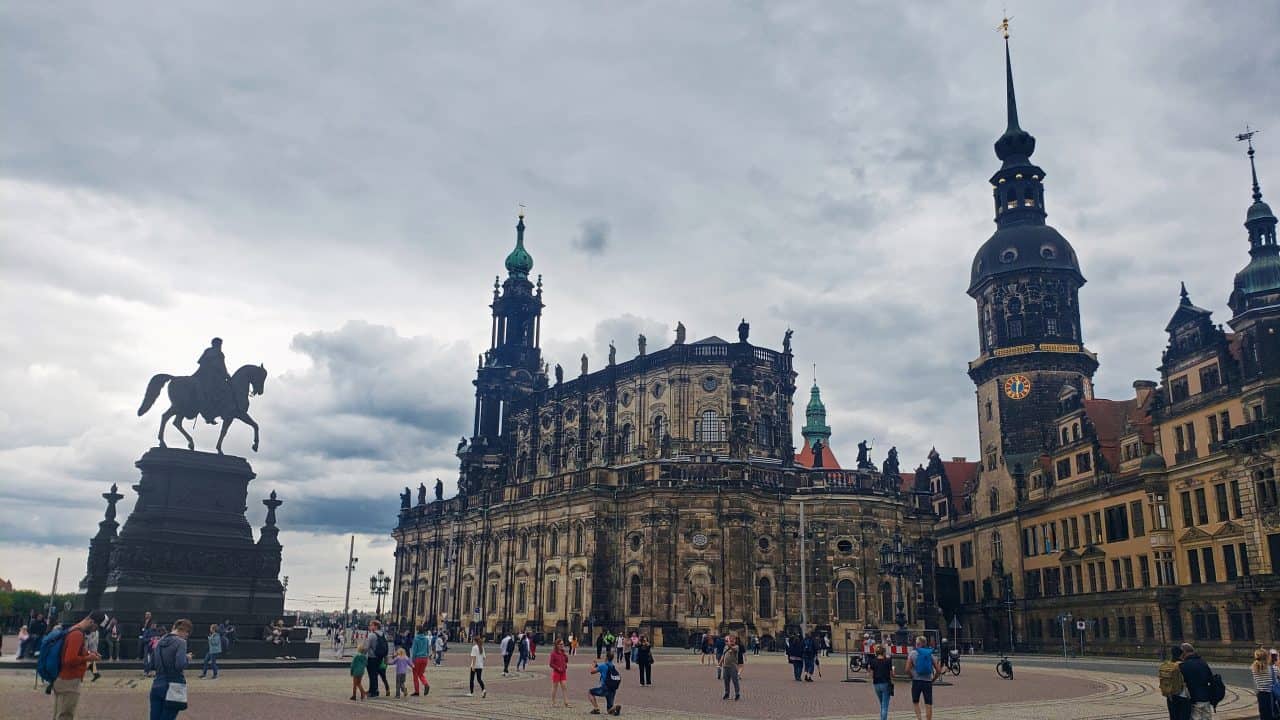
Wandering around Dresden, Elin and I were commenting that it was regrettable that Dresden was so black, presumably from pollution. I later found out that after Dresden was demolished during the war, they chose to rebuild, often using the original blocks of sandstone scattered across the city. Apparently, sandstone is so porous that dirt and pollution are absorbed and the sandstone becomes black. This isn’t a surface only black and can’t be easily removed from the soft stone. Of course, they don’t want it removed. They put it back up again as part of their history.
I was a little disappointed not to have heard more about Dresden and the bombings during World War II in our walking audio tour. So, what did I do? I went to my new source for all questions both weird and wonderful and asked ChatGPT and their competitor Google Bard to tell me what happened. Mike and I knew that Dresden had been devastated by bombs, but we didn’t realize that nearly all the damage had occurred over a three day period `near the end of the war in 1945. The bombings, involving over a thousand Allied bombers, sparked massive fires that ravaged the city center and its cultural heritage. Controversy surrounds the bombing even now; some view it as a war crime intended to terrorize the German population. Dresden’s architectural beauty made it a prime target, and the bombing is often cited as an example of “terror bombing”, designed to break morale by targeting civilians. Doesn’t this all sound familiar to the war in Ukraine. However, in the case of Ukraine, we usually see ourselves as standing on the side of right, unlike our role in Dresden’s “terror bombing.”
After the war Dresden was left in ruins with a huge reconstruction task ahead of them. Dresden chose to rebuild in a way that would preserve their historical and cultural identity while incorporating modern elements. It will be interesting to see what happens in the years to come in Ukraine. I hope they follow Dresden’s example. We visited Leipzig, which was also badly damaged in WWII. They rebuilt in a more modern style. As selfish as it sounds, this makes it less interesting for tourists for explore.
The reunification of Germany went a long way towards helping Dresden rebuild some of their most iconic buildings that were still in ruins in 1990.
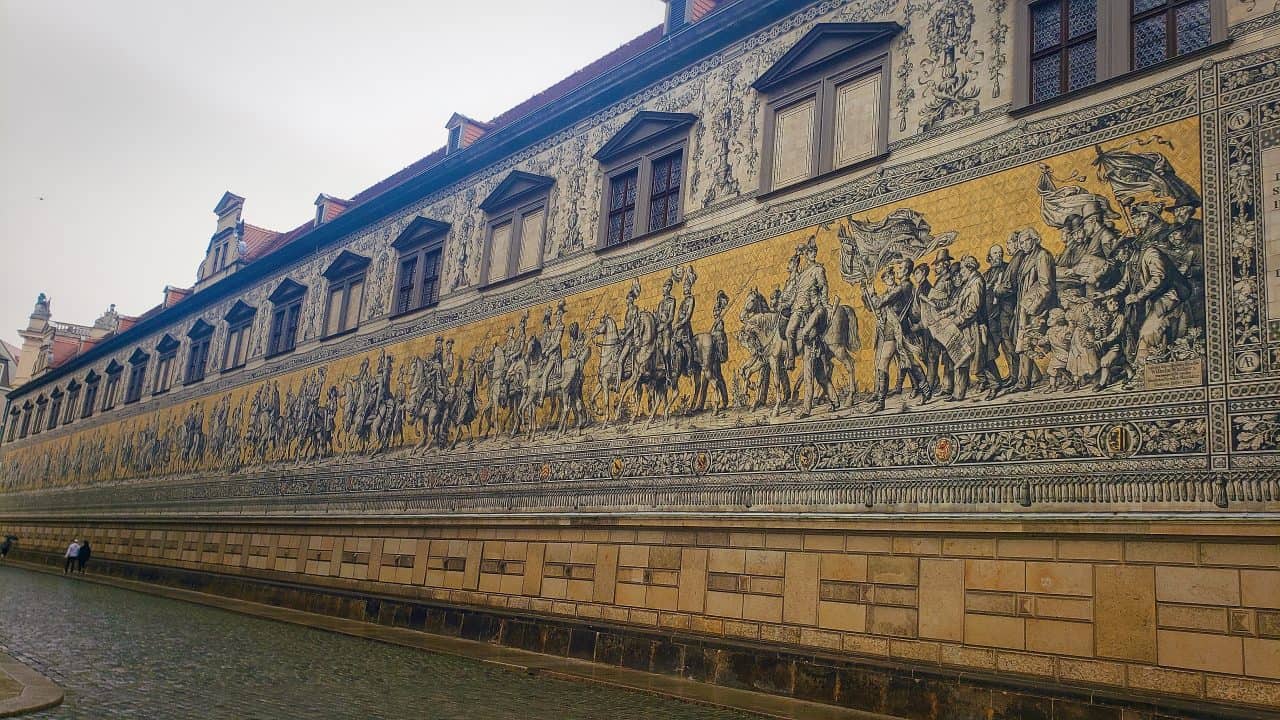
This mural, known as the “Procession of Princes”, is considered the largest porcelain artwork in the world spanning 102 meters (335 ft) in length and 9.5 meters (31 ft) in height. Originally painted in the 19th century to commemorate Saxon’s ruling family’s 800th anniversary, it was replaced in 1904 with around 23,000 Meissen porcelain tiles intended to weatherproof the art so it stood the test of time. Nearly all the rulers of Saxony are depicted along with the dates of their reigns. Interestingly, there is only one girl in this huge mural. She is shown at the very end and is surrounded by two boys. Remarkably, this wall largely withstood the WWII bombings, its ceramic tiles remained in place even during the firestorm.
A delightful discovery, about 30 km north of Dresden, was the charming town of Meissen. The photo at the beginning was taken during one of our bike rides, across the river from Meissen. Route changes meant we missed touring Meissen by bike that day. We returned by car the next evening, after the rain was predicted to stop. While some attractions were closed, the rain held off, except for a few minor sprinkles that seemed to appear just for suspense. Meissen is renowned for its porcelain, produced by the Meissen Porcelain Manufactory, founded in 1710. It is the oldest porcelain factory in Europe and is considered to be the finest producer of porcelain in the world (at least according to the internet 😊). The Saxon rulers and their alchemists where attempting to discover the secret of making true “white gold” in the early 1700s. With this discovery, they wished to keep production in a secluded place to prevent theft of the technique. The production center was initially within Meissen Castle, moving to the edge of the lower town in the mid-1800s where it remains today. Dresden china, well-known in its own right, started by decorating Meissen porcelain.
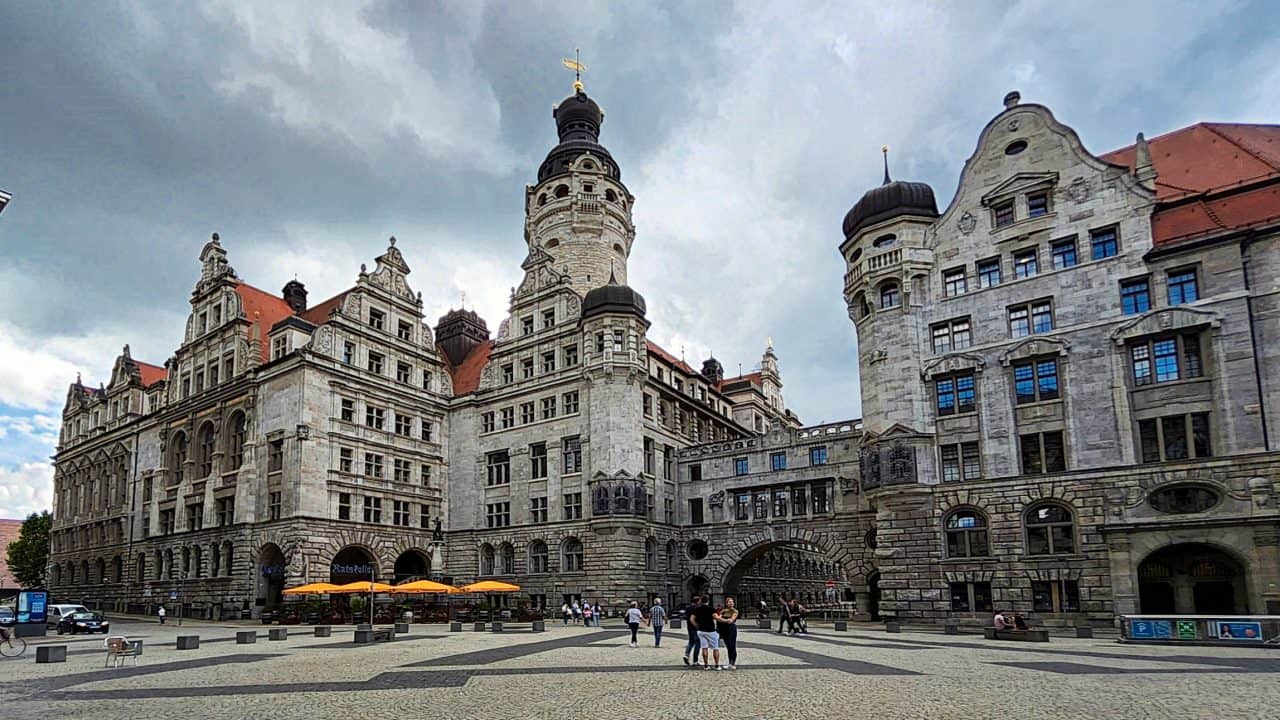
Although a lot of Leipzig that was destroyed in WWII, the New Town Hall, built around 1900, was only damaged. It was restored in the 1950s. I saw the engraving MDCCCCV on the town hall. I was pretty sure that this was an incorrect Roman Numeral based on my childhood education. I checked and confirmed that Roman Numerals could not contain 4 identical digits in a row (no “CCCC”). 1905 should be MCMV. Surprisingly I saw a building this week with 4 Xs in the date, again wrong. I wondered if we had revised the standard since 1905, but it seems not. I am not sure why some builders would have used this version.
Leipzig, and more specifically the St. Thomas Lutheran church, was home to many interesting people, especially in the music world. Johann Sebastian Bach was the director of music here from 1723 until his death in 1750 and taught at the church school. Mozart played the organ here in 1789. In 1813 Richard Wagner (composer) was baptised and later studied here.
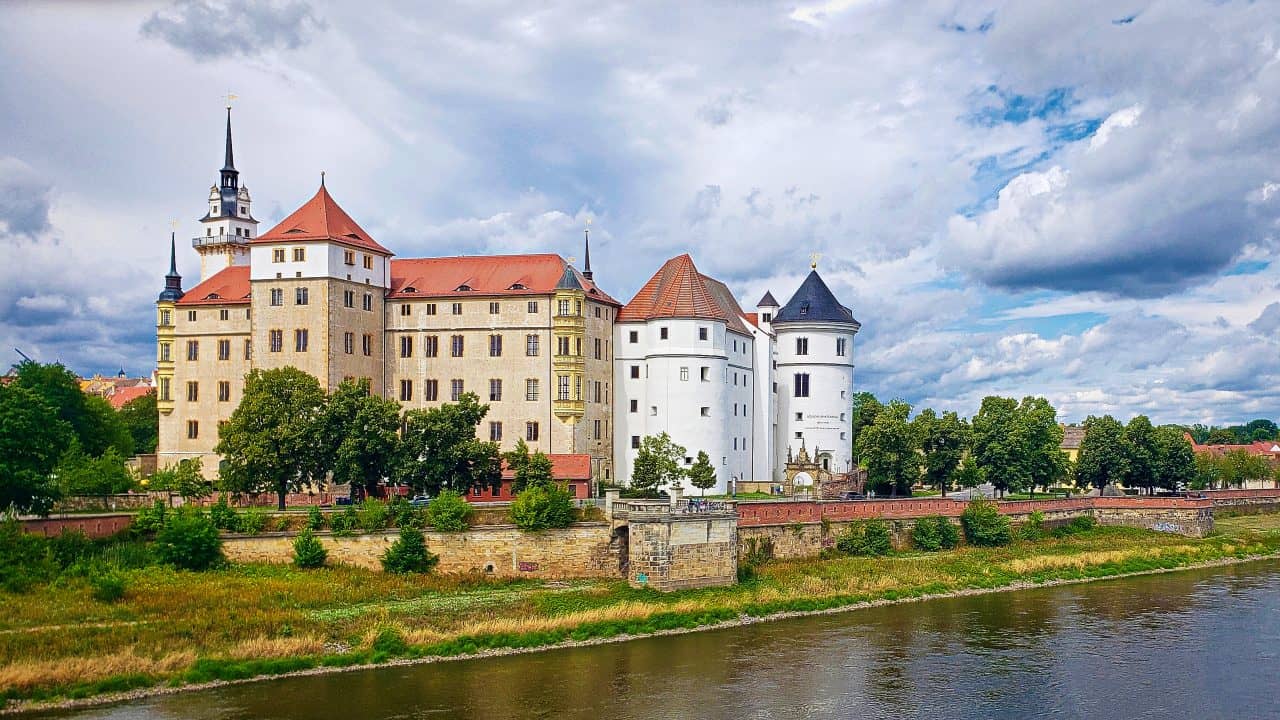
After leaving Dresden, Mike and I moved a few hours north to the town of Torgau. We camped about 2 km from the centre of town which you can see here. In the campground a few people were discussing our camper in German. I told them that it wasn’t the huge camper that they were calling it but that in France, I humorously called it a “petite maison” (small house). I tried to ask how to say this in German. I knew that “kleine” was small so I wanted to know how to say “house”. They kept repeating “house” back to me. I thought they didn’t understand what I was asking and I kept trying. For those of you that recall the Three Stooges skit about “Whose on First” you can imagine how this was going. It turned out that, like in the skit, they were answering me. German for house is “haus”, pronounced basically the same. I think they thought I was pretty silly.
Some of you might remember that, just as a test or learning trial, I asked ChatGPT to rewrite my last article for me. I told you that it came out sounding quite flowery. Well after I posted my version, I went back to ChatGPT and asked it to rewrite my article again, this time sounding more like me and using less flowery language. I had no idea if it would understand what I was asking or if it could do that. IT DID! And no, I didn’t use it.
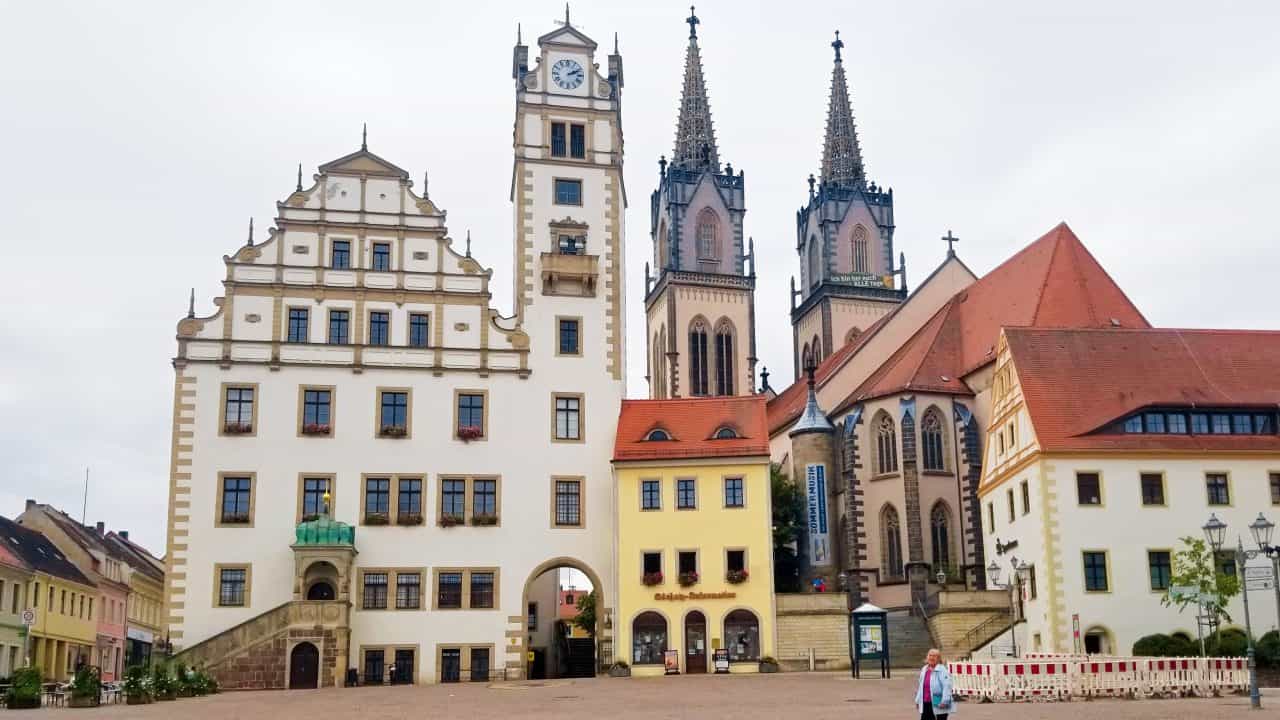
Here is a lovely small town that we stumbled upon called Oschatz. It was a little unusual in that it was almost deserted in mid-afternoon on a Friday in early August, prime season. A lot of the stores were closed, even though some had signs which indicated they should be open. We checked to see if there was a holiday we didn’t know about but there didn’t appear to be one. What a difference advertising must make. Mike thought that maybe the town was quite happy without tourists.
I had to include this small metal picture. It was on the wall of a restaurant and Mike and I both thought it was great. The outline is the town of Oschatz and the backlighting is excellent. I was looking to see how they did it and if we could use it at home.
I wanted to end this post with something a little different. Here is a picture taken in our campground of a group of young people playing elimination ping pong. For those of you who have a ping pong table, this is great for groups. There are no teams, and everyone stands in a circle around the table with their paddle. You hit the ball once and if you miss, or it goes off the table, you are out. The player at the opposite end tries to return your ball and if he does, the person after you has the next shot. This is all like normal ping pong, except the person hitting the ball changes with every stroke. Eventually you get down to two and then one player who is the winner. It looked like much more fun than everyone standing around watching two people play.
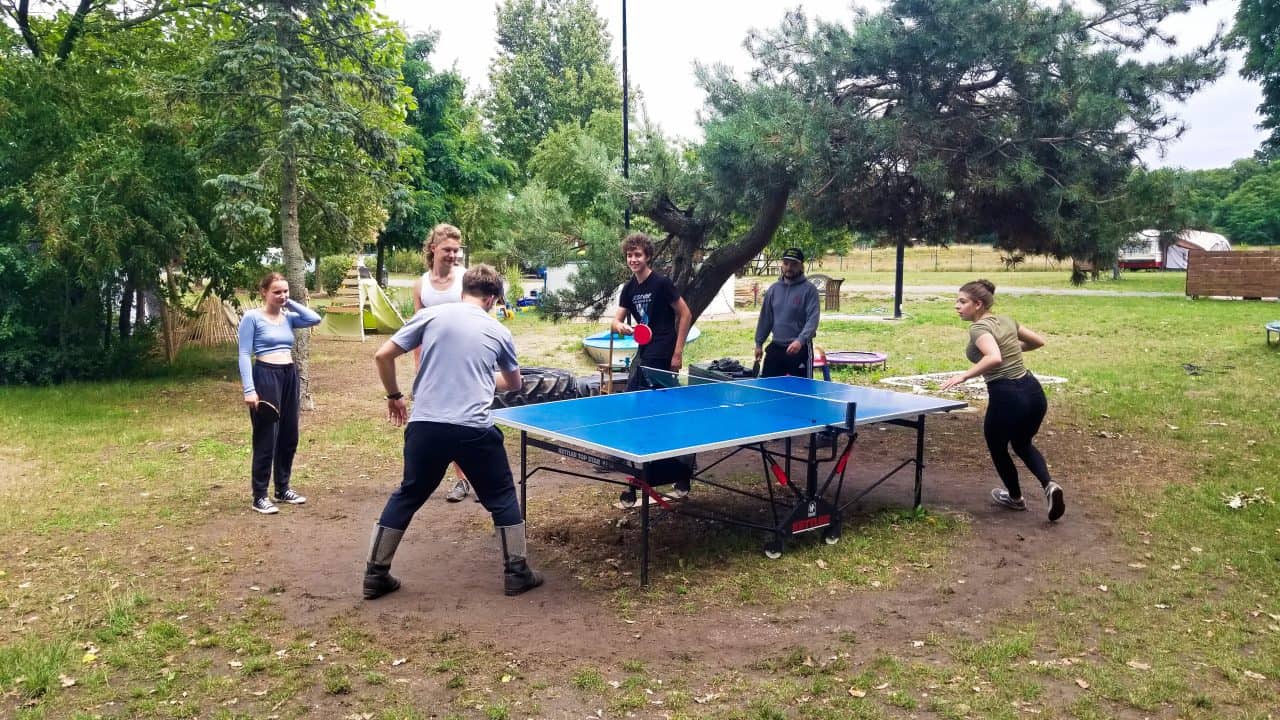
Note: Mike and I just booked our tickets home. We arrive in Canada on the evening of August 22 and return to our camper on September 5. For Mikes’s family, we hope to see you all on August 25.

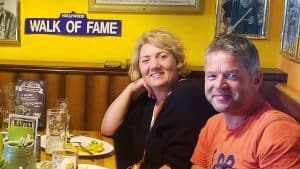
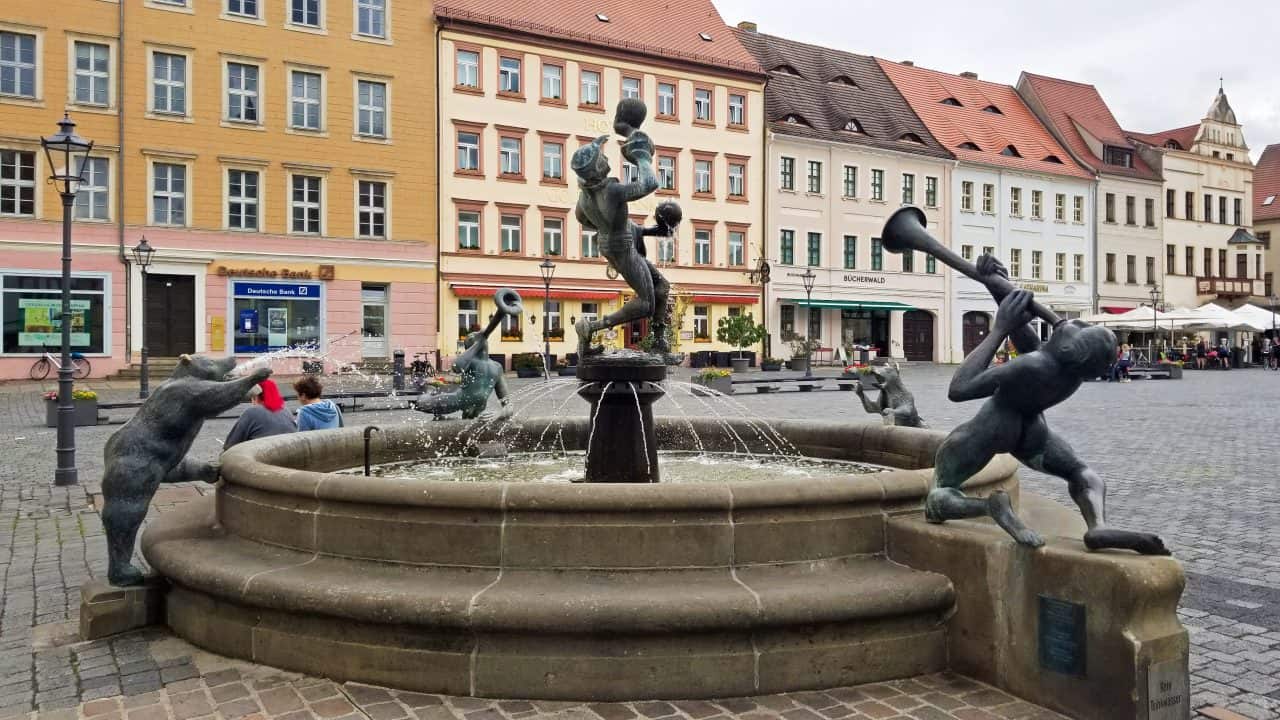
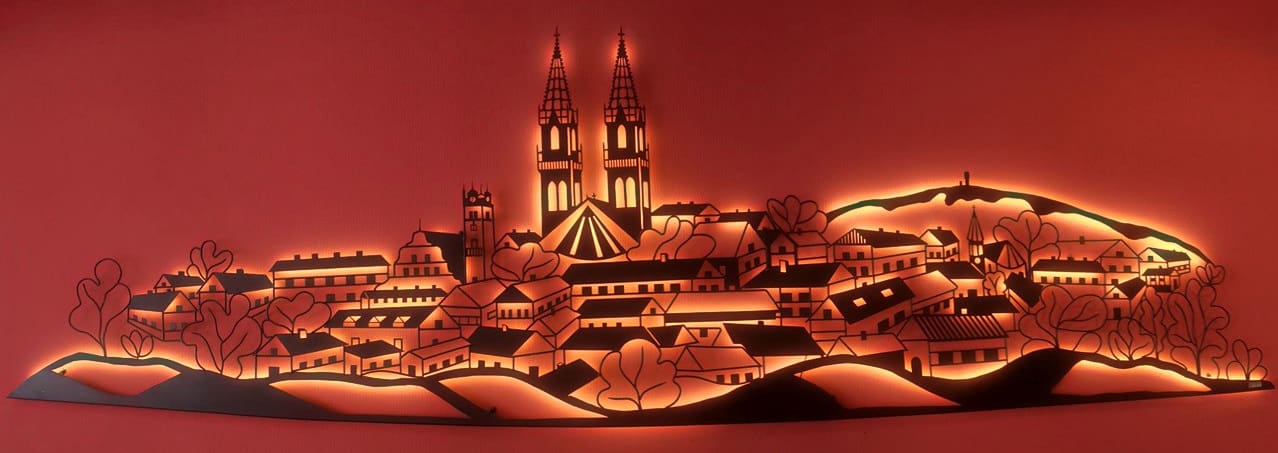
Leave a Reply